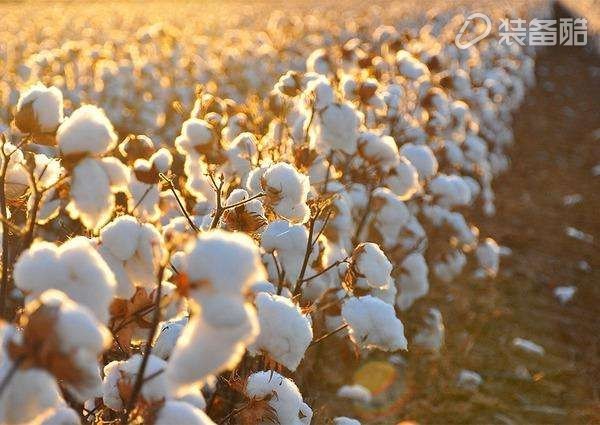Consumers wear sportswear more frequently than before because it is still a symbol of fashion and people exercise more often than before. Although exercise itself is a healthy choice, there are also people who insist that what people choose to wear while exercising can also affect their health. The U.S. Centers for Disease Control reported earlier this year that more than half of Americans (52%) said they had reached the recommended amount of exercise since the survey was first started 20 years ago. The Global Health Association reported that the healthy economy, including yoga and fitness, achieved sales of $3.7 trillion in 2015. According to Morgan Stanley's report, alone, by 2020, it is expected that sportswear sales in the United States will reach 83 billion U.S. dollars. Katie Smith, a senior analyst at the retail database Edited, pointed out that consumers’ demand for sportswear’s main products has protected the product category from losses caused by price cuts such as discount promotions. Edited recently held a panel discussion in New York. She pointed out that even though leggings are everywhere, their average price has only increased a little. From H&M to luxury brands, sportswear has always been a very good product. However, despite the entry of high-end designers into sportswear, this product category is still dominated by products sold at affordable prices. In fact, Smith said that 82% of sportswear products are priced below $100, compared with 53% of regular apparel priced below $100. Although the industry has been working hard to add more styles, colors, and colors to keep consumers interested in the product category, one area that is currently overlooked by the industry is that the fiber used in the product - consumers have strong The view, especially when it comes to health aspects. According to the Lifestyle MonitorTM Survey, overall, more than three-quarters of consumers (79%) stated that cotton is their favorite fiber to wear. Fifty-three percent of consumers believe that cotton is the most suitable fiber for sportswear when compared with synthetic fiber. Eighty percent of consumers said that cotton is the most comfortable, and 79% said it is the most trustworthy. In addition, when consumers think about the characteristics of cotton, 78% think that wearing cotton sportswear looks cool. 77% like its high performance attributes, and 67% of consumers like its hypoallergenicity. About 20 percent of the market's technical features of sportswear are made of cotton. Some consumers have opinions on synthetic fibers, and studies have shown that they have reason to think so. Researchers at the University of Ghent in Belgium have found that certain bacteria easily grow on polyester fabrics, causing them to leave sweat after washing. However, these microorganisms cannot survive on cotton fabrics. In addition, although manufacturers have added deodorant treatment to synthetic sportswear, such as nanosilver, to help kill bacteria, a Duke University study found that the treatment is harmful to plants and microorganisms. In addition, these deodorant treatments are: Coatings. Scientists have been concerned about the problem of nano-silver falling off in the laundry room or absorbed through the wearer's sweat glands. The EU Scientific Committee’s study focused on its health effects and found that nanosilver can leave permanent blue-gray traces on the skin or eyes. A more worrying finding is that "in vivo and in vitro studies have shown that exposure of nanosilver leads to possible genotoxicity, denaturation during the immune system's operation, and deposition in the spleen, liver and testes. Earlier this year, researchers at the University of Technology, Sydney, said that "there should be an alarm bell for the widespread commercial use of nanosilver," because it can be transmitted through microbes in the human body and the environment. “People need to know how it is widely used. However, more importantly, they need to be aware that the presence of nanosilver has been shown to lead to antimicrobial resistance,†said microbiologist Cindy Gunawan of the ithree Institute at the University of Technology, Sydney. The doctor said. In addition to the health risks of nanosilver, scientists and the United Nations have warned the public to stay away from microplastics, which have appeared in global waters. They may poison the food chain because these tiny plastic beads have already appeared in the stomach of marine life - as well as in drinking water. In the United States, a study commissioned by ORB, a data communication center, found that 94% of water samples have been contaminated with plastic. Researchers at the University of California, Santa Barbara say that synthetic-textile garments play a role in this pollution because it breaks down in the laundry cycle, and then it is transferred to a sewage treatment plant and finally into rivers, lakes and oceans. Some organizations are concerned that synthetic fibers such as polyester, rayon and nylon are not as breathable as cotton. In addition, synthetic fibers become fabrics after treatment with heavy chemicals. Dr. Brian and Anne Marie Clement, authors of the book “Can Kill Clothes,†said that “looks like innocent clothing can harm your health,†in which they warn consumers to pay attention to chemicals in synthetic fibers while understanding natural fabrics. the benefits of. According to the US Cotton Company Lifestyle Survey, because most consumers (51%) are willing to pay higher prices for natural fiber clothing, such as cotton, the development towards natural fibers is good for sportswear manufacturers and also for the health of consumers. Helpful. Source: Textile and Apparel Weekly Five Blade Razor,Disposable Razors,Bic Disposable Razors,Disposable Razor Blades GUANGZHOU WEIDI TECHNOLOGY CO., LTD , https://www.weidirazor.com
Survey shows that 79% of consumers express their preference for wearing cotton fiber sportswear